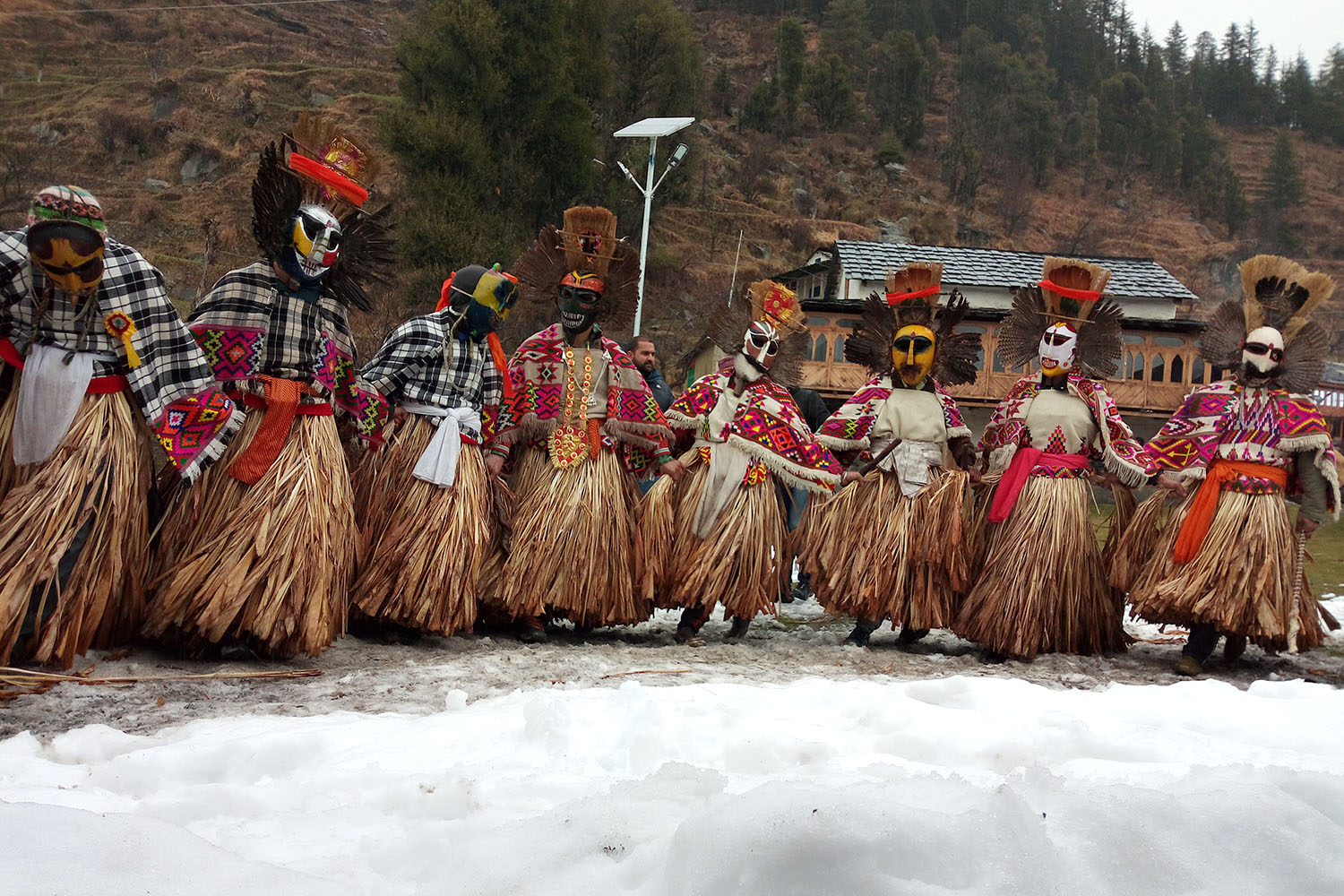ARTICLE
Fagli Masks
Made from materials like wood, clay, metal and polychrome, fagli masks are used in Himachal Pradesh, especially the Kullu valley, as accompaniments for dances during the Fagli festival. The festival takes place towards the end of winter during the month of Phalgun (February/March), from which the name ‘fagli’ derives. The performance narrates legends of the dwellers of the region, who believe that their ancestors struggled against evil forest spirits. Stories of more recent settlers are also depicted.
Fagli masks are generally made of wood and polychrome, with serrated teeth and a dark face patterned with white pigment. Feathers and flowers are used as decoration on the top and around the face. They are worn along with a straw costume. The masks are provided with holes through which ropes or threads can be passed, in order to secure them to frames (when they are being used in processions) or to dancers’ heads (when they are worn). Vegetal fibre padding is also used to make them easier to wear. Carvings on wooden masks suggest facial features as well as wrinkles on the forehead; black vertical marks are used to represent hair. Male masks usually include carved moustaches, while female masks earrings, carved tiaras and pendants. Masks from the Banjar Valley (in Kullu) tend to be more colourful than most Fagli masks: though their bases are usually black, stylized patterns are drawn on the cheeks and around the eyes. Orange, white and red pigments are applied to vertical carved strips on the forehead.
The Vishnu mask is one of the most popular fagli masks, since the god is believed to have rescued the people of the region from forest spirits. The mask is usually carried around on a pole at the head of a procession on the first day of the Fagli festival. Monkey masks made out of wood are also produced, and are used to represent the animal world.
Fagli masks have many local variations and are produced with different materials and through various processes across the state of Himachal Pradesh. Older masks are preserved and used, even if they show signs of wear and tear. Brass masks attached to a frame can also be found in several villages, worshipped at home and at village shrines.
Bibliography
Our website is currently undergoing maintenance and re-design, due to which we have had to take down some of our bibliographies. While these will be re-published shortly, you can request references for specific articles by writing to hellomapacademy@map-india.org.







